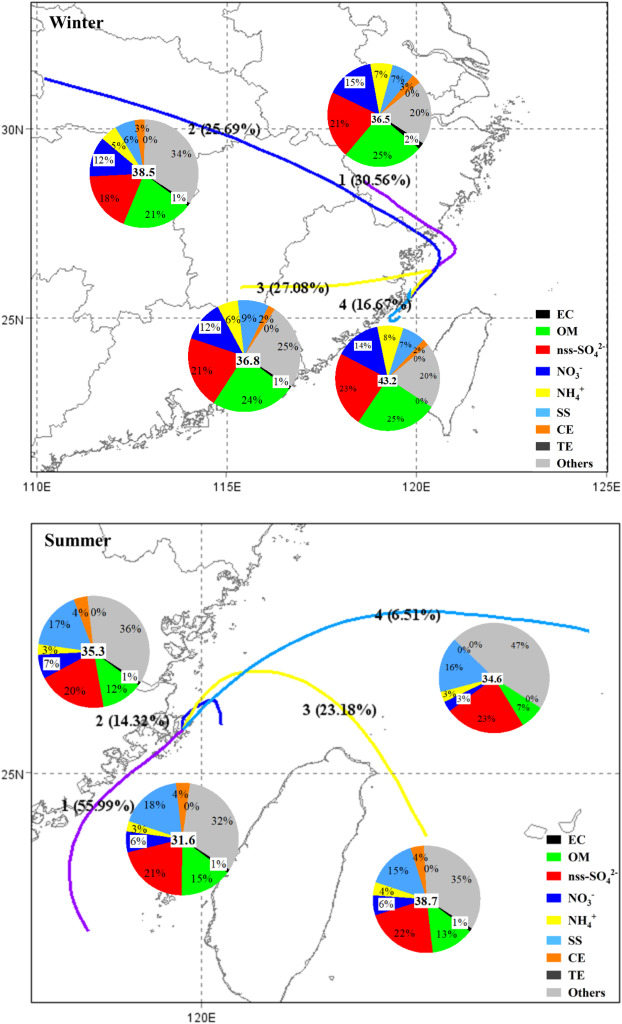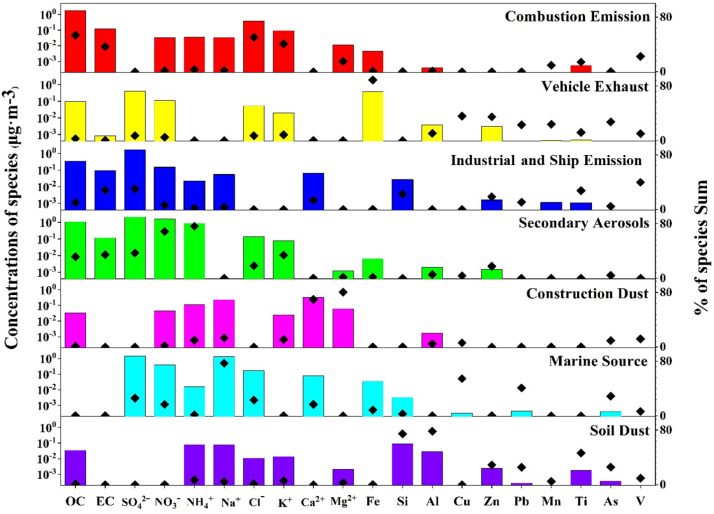Recently, the Research Group of Atmospheric Pollution Control Chemistry (Research Team led by Professor CHEN Jinsheng), Institute of Urban Environment, Chinese Academy of Sciences, discovered important results – the East Asian monsoon and ocean emissions jointly affected the source and transport mechanism of atmospheric PM2.5 on islands. Strong oxidation conditions and sea salt in summer promoted PM2.5 formation, while the predominant northeastward wind in winter brought more aged aerosols through the outflow of continental pollutants to the monitoring sites. The research results were published on Atmospheric Research under the title of Characteristics and source apportionment of PM2.5 on an island in Southeast China: Impact of sea-salt and monsoon. The first author is LIU Taotao, and corresponding authors are Professor CHEN Jinsheng and Associated Professor HONG Youwei. This study was supported by the National Key Research and Development Program (2016YFE0112200&2016YFC02005), the National Natural Science Foundation of China (41575146), and the Chinese Academy of Sciences Interdisciplinary Innovation Team Project.
With rapid economic development and urban agglomeration, PM2.5 pollution in East Asia has gradually developed characteristics such as wide-ranging regional pollution, complex formation mechanisms and explosive growth. Air pollution is predominantly caused by regional transport and local sources, and synoptic weather plays an important role in the evolution of haze. The southeast coastal areas locate in the East Asian monsoon region, and are affected by sea and land breezes, typhoons, and sea salt, which make the pollution characteristics and transport mechanism of atmospheric PM2.5 in coastal areas more complicated.
To study the combined effects of the East Asian monsoon and ocean emissions on PM2.5 in island cities, filter samples were collected simultaneously at four different functional sites, and different categories of air pollutant and meteorological parameters were also measured at the monitoring sites. Based on the positive matrix factorization (PMF) model analysis, source contributions of PM2.5 between winter and summer have significant differences. The contribution of marine source to PM2.5 in summer reaches 43%, which is significantly higher than that in winter. PM2.5 is mainly dominated by secondary aerosols (53%) in winter, and the proportion of secondary aerosols in summer is 12%. The concentrations of non-sea-salt-SO42- in winter were close to those in summer, but the sulfate oxidation ratio in winter was much lower than that in summer. The results could be explained by the fact that sea-salt-SO42- has an important contribution to secondary inorganic aerosol on islands. According to the air trajectory clustering, it was found that there was significant aerosol aging and regional transport in the island city during the East Asian monsoon, and the PM2.5 composition in winter was mainly affected by continental air masses, while PM2.5 in summer showed the characteristics of ocean emission. This study helped to understand the characteristics and source mechanisms of PM2.5 pollution under complex meteorological conditions in island cities.

Cluster results of air mass trajectories, relative contributions of chemical components and PM2.5 concentrations of each air mass to the PM2.5 concentrations, by season.

Source contributions to PM2.5 during the sampling period, by season and by site.

PMF source profiles for PM2.5 samples obtained during the sampling period.